Interview with State of Art Studio
The first image I’ve seen by SOA‘s Roberto De Rose was the Maison Hermes personal work based on Renzo Piano’s Hermes building in Tokyo. I was so amazed by it I asked him to share more information about it and it became one of the first making of articles on this blog – Making of Maison Hermes. Roberto is on the CityLIFE Challenge jury panel and those of you coming to Academy Day #2 in Venice this October will get to meet him and Gianpiero in person. For the time being here is an Interview that will shed valuable light on the insides of SOA… Enjoy!
Roberto : First of all I would like to thank you, Ronen, for interviewing me. It is an honor to get the chance to talk about us, directly here in the blog. State of Art has three main partners: Roberto De Rose (me), Gianpiero Monopoli and Manuela Grandesso. Gianpiero and I are in charge of the architectural vision, while Manuela works on 2D graphic and printing. Our studio was born in 2009 when our working lifestyle needed to be renewed, and the three of us wanted something focused on a peculiar point of view.
We want to offer our Italian and international clients both architectural vision, with a unique and identifiable style, and some real help with the further development areas.
We offer not only the images development, but we always try to give a complete work, beginning from the concept till up the printing of the product. This assures us that what we have in mind can really be transformed in the final result.
Can you tell us a bit about yourselves, your backgrounds and how you got into Architectural Visualization? What do you like about doing it the most?
Roberto : If I look behind and think about how I came to get this work, I must say that architectural vision is the last of many little steps I’ve done in the past. I attended a polytechnic school that surely helped me with the freehand drawing and Cad, a great passion for me. In 2005 I followed a CG ( computer graphics ) course and I began to work with 3dsmax and V-Ray the following year. I have always worked on texture and photo-retouch, this is the reason I feel I am more inclined for a pictorial visualization and not the 3d. I am really happy with my work and, so far, I’ve got the chance to get in touch with fantastic people and to get more new friends, like Gianpiero and Manuela, who became my partners.
Gianpiero is the Managing Director of the company. He was born with the passion for Architecture. His 3d experience began in 1998, when he produced his first animation with 3ds 4, for his high school leaving examination. He worked for some companies here in Italy and, after that, moved on to Great Britain in 2006, and worked for Hayes Davidson, a very well-known Visualization Studio, working for Renzo Piano Building Workshop, David Chipperfield, KPF and many more.
Once he came back to Italy we met in a little company and, together with Manuela, gave birth to SOA.
What he likes the most during the creation process is the concept, the lighting and the photography.
Manuela is the ace up in our sleeve!
She worked for 30 years in the screen printing and 2d field. She is the person in charge for the organization aspects of our studio. She checks all our final works, and also works on the certifications. What’s more, she takes care of the printing process of the images, helping our clients to get what they really look for.
How did SOA came to be? How long ago was it? What was your motivation in doing so?
Roberto : The main idea was and still is the creation of our own unique communication style for architectural projects. We are deeply sure that our work consists on picking up the designer’s ideas and to encapsulate them in images by using our own style. This means to try and improve ourselves everyday so to create a better product; this also means to work indirectly and let esteem Architecture. What we have chosen is a long and winding road, because the cultural creation asks time and it does not give results in a short time.
Can you tell us about any difficulties you might have had in the early days starting the company?
Roberto : The difficulties we met when we opened our studio are, above all, linked to the low knowledge of our work from the clients’ side. This brings to hardly understand how much the work costs talking about the hours we spend on a single image. Bureaucracy is another obstacle, above all here in Italy, when someone wants to open a new company and to let it work at full stretch. This problem usually impedes the company for its whole life.
How is being your own boss is different from working as an employee in a bigger studio?
Gianpiero : To be the owner of a Studio compared to be employed is surely a great challenge. Your way of thinking about your work must change radically. You need to focus on the results, comparing them with what that project can make you earn. When you are employed in a Studio you can focus on the your image but, most of the time, you are part of a process and at the end you may not discuss about the changes you are asked to do on your creation.
What do you do to get clients? can you define the type of clients you have now? Looking for? Was it any different form when you started SOA?
Gianpiero : most of our clients are Architectural and Engineering Studio, Construction Companies and Real-Estate Operators.
Our clients come to know about us by word of mouth: when one of your clients is happy about your work, this is already the best advertisement for you. We obviously use also forums and social networks.
We specially contact clients able to understand our working lifestyle. We are not afraid to face with big projects, also because we have the means and the experience to work on them and to finish them within the agreed terms.
How much freedom do you have in your client work?
Gianpiero : Talking about the freedom we have in our work, I would like to underline that our clients come to see us because they understand the quality and the way we explain architectures. They ask us pieces of advice and suggestion to make them catchy. We always try to think about something unique for that project. We do not just carry on the orders we are given, we are consultants. This is why we need freedom, so to let the client free to make the right choices without any prejudice.
Can you share more details about your typical client work-flow from start to finish of a project? Do follow the same approach for any client or is it different depending on that?
Gianpiero : Our operative work flow is always the same, for any project. We try to understand what the subject is, what we must represent, and the meaning of the images we are ordered. After that we offer our client some drawings to give him different points of view to explain Architecture. Once this passage has done, we create the 3d image, followed by the sharing, the lighting and the final render of the image in high-resolution. The image obtained will be subjected to an important post-production passage, as a result we have the definitive image. Our client can follow the process through a web interface and take part in case of changing.
Can you define the balance between Pure Render and Post Production in your work?
Roberto : Our approach to the realization of the imagines could be estimated as 35% in Pure Render and 65% in post-production.
What kind of hardware do you use?
Roberto : Our Studio works with Workstation Dell Dual Xeon (16 cores each Pc), NVidia Quadro FX 3800 and 24 GB Ram. We have also an in house render farm to assure our clients the delivery within the agreed terms, also in case of very short deadlines. What’s more, we use hardware Wacom that allows us to get a higher feedback while we are working on the post-production of the images : 1 Cintiq 21 and several Intuous A4.
Can you tell us about the software you use in the studio?
Roberto : The Studio works with Autodesk 3DS Max 2012, Adobe Photoshop and Chaosgroup V-Ray 2.0.
Have you been trying the new GPU rendering solutions that are being offered these day? iRay for example?
Roberto : We haven’t tried any GPU rendering solution yet, because we think it is too early to add it in our pipeline. The scenes we are used to work with are usually very big and articulated. Sometimes we use V-Ray RT for little preview in real-time, only to value the direction of the sun in the images or the composition.
How much time do you spend working on an image / project usually?
Roberto : The time spent on an image is changeable. We can deliver an image after a day, but we have been working on images since one year. The delivery time can change depending on our client’s needs.
Who do you consider as a source of inspiration… Where do you go to find it?
Roberto : To live in Italy is really a source of inspiration. We are surrounded by artistic masterpieces that move us when you go and see them in our cities. Our country is considered to be an open air museum and, as we live near Venice, we do agree with it.
Artists such as Canaletto were born here. They made the history of our discipline already at that time. They did not have any PCs, but they used brushes and sensitivity. We are unintentionally inspired by that way of creating images, because no matter what tool you use, but how you use it.
Nowadays the most important mean of reference for our inspiration is the Web. It is undoubtedly important to go to museums, expositions (such as La Biennale d’arte di Venezia and the Biennale di Architettura) where we have the chance to see directly the works of international contemporary Artists.
Any other activities besides work going on in SOA, like personal projects, hobbies, etc.
Roberto : well… we tried to go to the gym, but we realized that to test the Restaurants round here is much more fun!
Can you share with us some interesting stories about memorable projects / famous project you been working on – some inside stories you can share (with images too if possible).
Roberto : We would have so many tales to tell, but we obviously prefer not to disclose them publicly. But, just to let you understand, we are not very far from what often is read on Clients from Hell.
The technological advances in hardware and software allow more people to enter the architectural visualization field with less effort and experience, Does that effect you?
Roberto : In our common thought any technology should be at hand for anyone and easy to understand.
I remember I followed the V-Ray developing since the beginning and Vlado and Nikki Candelero (the person in charge for Choasgroup some years ago) were asked to make the software easier to use, so to let the artist free to create even without a perfect knowledge of all the possible parameters.
The software must be simple, easy to understand, letting your imagination free, because it is one of the most important elements in our work.
Can you share some work in progress drafts or sketches for a single project, representing a start to finish cycle, as I’m sure that will be very interesting to see?
Sure here is a process image series starting with the general plan for the image and initial blocking.
Then doing the background bits.
And going on to render.
Curves postwork.
Adding stuff.
And the final image
Here are also some crops at actual rendered size.
How’s is being Italian and a Studio Located in Italy influence your visualization work? State of Art must also refer to Italy and its place in art across history, and specifically in Architecture…
Roberto : You remind me of a sentence by Arch. Renzo Piano I listened to once in the TV
Italians are like dwarfs on the shoulders of a giant. The giant represents culture, the same ancient culture that donated us an extraordinary skill to catch the intricacy of what’s around, to structure the thoughts, to link art and science at the same time. This is an outstanding resource, and this way to be Italian will find a place all over the world.
can you share some photos of your studio / work environment? That might be very interesting for the readers.
Roberto : Our Studio was created as a place where to work in peace. It is far from traffic jam, and it is opposite a beautiful park where we can go for a walk finding inspiration among sculptures created by famous Italian Architects.
Our clients find here a comfortable place where they can check our work, drinking at the same time some good coffee.
Are you looking to expand? become a larger studio with more and more artists – or small form factor is best for you?
Roberto : In our feature we expect to see 10 artists in our Studio, where they can really live thanks to their work, finding the right balance with both working and private life. We are not used to work on weekends, or at night just to go along with some stupid deadlines, but we try to have the right time to create what we are asked for by talking with our client and planning the work.
We see our Studio as a little tailor workshop, where any client can get something made-to-measure, as only a skilled tailor can do.
Tell us more about the State of Art Academy Venture. What sparked it and were are you going with it?
Roberto : State of Art Academy is our Educational area, introduced in may 2011 during the first Academy Day.
We tried to create something we already had in our mind when we thought about our Studio. A place where we can train artists with solid education in the arch-viz field, because the main part of the courses has a specific program, 3dsmax or Photoshop.
The Academy Day, where you will be our guest for the next edition, is a training moment but, above all, it is a reunion where we can personally get in touch with international artists who take part in their artworks. This is a nice moment we would like to organize periodically. It allows us to know each other, to talk about our world and to go and visit one of the most beautiful cities in the world, Venice!
The Web is of course an extraordinary way to share content and to get to know more people, but we also think that such events like the Academy will allow us to be more united and aware of how important is what we create everyday.





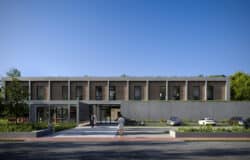




























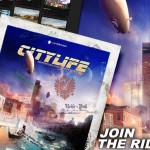
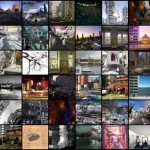
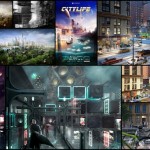
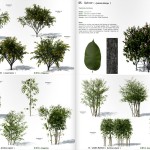
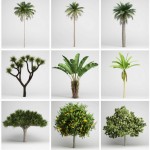
woooooowwwww cool
??? ?????? ?????
Great interview! State of Art Studio seems to be a very confortable place.. It was really interesting to read about their workflow.. I wish to work with them! 🙂
Thanks guys! Hope to see you soon in Venice! 🙂
great, thanks for sharing your workflow…greets from graz/austria
this was a nice read, I really like your work environment! look forward to meeting you all in Venice 🙂
cool read, and great work. I love the comment on how one uses a tool, not the tool itself.